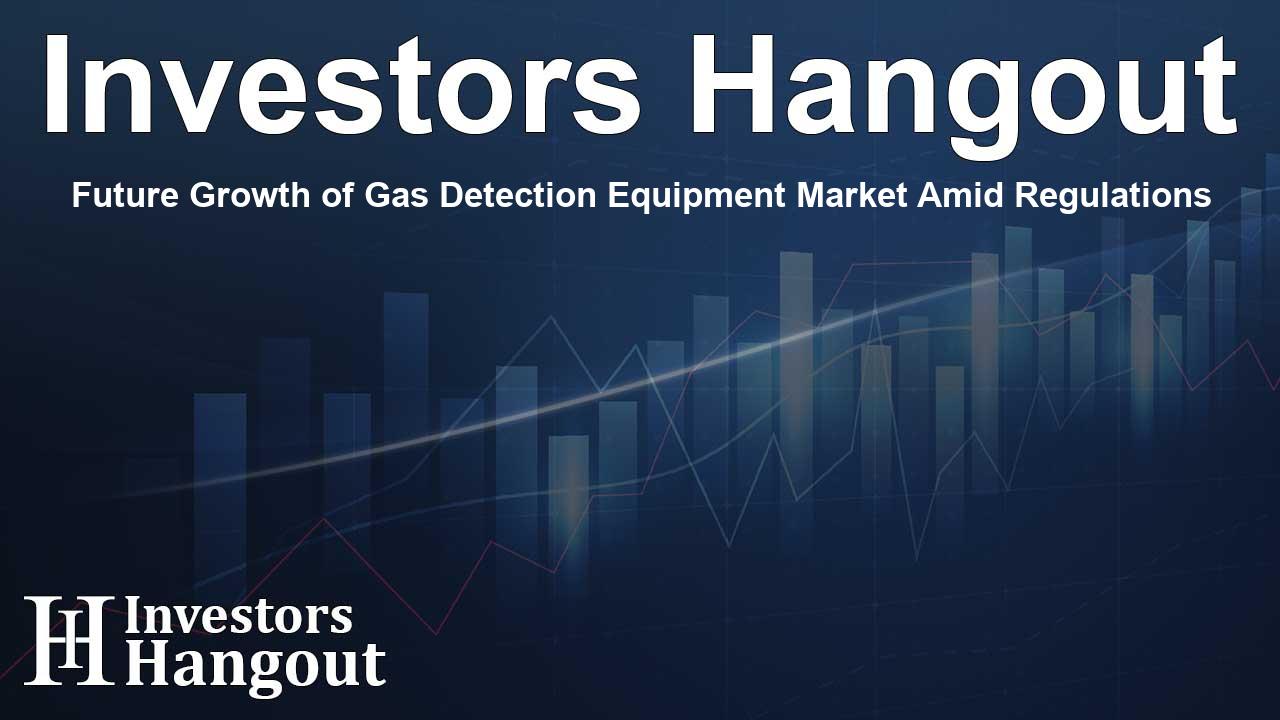Future Growth of Gas Detection Equipment Market Amid Regulations

Overview of the Gas Detection Equipment Market
The Gas Detection Equipment Market is projected to grow substantially, with estimates suggesting an increase from US$ 4.7 billion in 2024 to an impressive US$ 8.4 billion by 2035, thriving at a compound annual growth rate (CAGR) of 5.5%. This remarkable growth is primarily attributed to rigorous safety regulations enforced across various industries including oil and gas, chemicals, and mining, which are crucial for detecting gas leaks and preventing hazardous events.
Driving Forces of Market Expansion
As regulatory bodies tighten safety standards, the demand for advanced gas detection equipment is increasing. Technological advances are also pivotal, with innovations such as wireless capabilities and AI-driven detection enhancing real-time monitoring and accuracy. Alongside this, rising awareness regarding workplace safety and the push for smart infrastructure investments are further catalyzing market growth.
Technological Advancements
The integration of modern technologies into gas detection systems plays a vital role in the expansion of the market. For instance, AI-powered networks facilitate real-time monitoring and alert operators about potential dangers in a timely manner. Innovations in portable and fixed gas detection devices are also seeing increased adoption in both residential and commercial settings, contributing to the comprehensive growth of the industry.
Industry Participants
A variety of companies are at the forefront of pushing this market forward by developing cutting-edge technologies and extending their global presence. Notable players include:
- Honeywell International Inc.
- Drägerwerk AG & Co. KGaA
- MSA Safety Incorporated
- Industrial Scientific Corporation
- Riken Keiki Co. Ltd
- Siemens AG
- Emerson Electric Co.
Key Trends Shaping Market Growth
The landscape of gas detection is being reshaped by several notable trends:
1. Stringent Safety Compliance
- Regulatory agencies are enforcing strict norms related to workplace safety, compelling industries to adopt advanced gas detection systems.
- Companies facing the challenge of being compliant are finding increased demand for both portable and fixed gas detectors.
2. Advancement in Wireless Technologies
- Organizations are increasingly opting for smart gas detection devices which offer features like real-time monitoring and remote alerts.
- Wireless sensors are becoming popular due to their easy installation and efficient data transmission capabilities.
Regional Analysis
The market for gas detection equipment is diverse, varying significantly from region to region:
- North America: This region leads the market largely due to strict industrial safety standards and the wide adoption of smart technology.
- Europe: The high demand arises from the chemical and energy sectors, with increased focus on upgrading gas safety infrastructures.
- Asia-Pacific: Experiencing rapid growth, this region benefits from industrialization and rising energy requirements combined with government regulations.
- Middle East & Africa: There exists a notable demand link to the oil and gas sector, characterized by high-risk work environments.
Future Prospects and Research Directions
Looking ahead, the gas detection market appears poised for robust growth, fueled by:
- The increasing implementation of AI and machine learning technologies in predicting gas leaks.
- Further expansion into emerging markets like Asia-Pacific and Latin America, propelled by heightened safety regulations.
- Continued investments in research and development, particularly concerning ultra-low power detection technologies.
Frequently Asked Questions
What drives the growth of the gas detection equipment market?
The growth is primarily driven by stringent workplace safety regulations, rising demand for advanced monitoring solutions, and ongoing industrialization efforts.
How can companies benefit from investing in gas detection projects?
Investing in gas detection initiatives leads to enhanced safety measures, regulatory compliance, and access to modern technologies such as predictive maintenance systems.
What trends are reshaping gas detection technology?
Emerging trends include wireless gas detection systems, cloud monitoring capabilities, and AI-based analytics, which are revolutionizing industry safety protocols.
What hurdles do companies face in deploying gas detection solutions?
Challenges encompass high initial investments, ongoing sensor maintenance costs, systems integration complexities, and the need for skilled personnel to interpret data.
Where are the best investment opportunities in this sector?
Promising investment sectors include oil and gas, chemicals, and pharmaceuticals, with a strong market presence in Asia-Pacific and North America.
About The Author
Contact Caleb Price privately here. Or send an email with ATTN: Caleb Price as the subject to contact@investorshangout.com.
About Investors Hangout
Investors Hangout is a leading online stock forum for financial discussion and learning, offering a wide range of free tools and resources. It draws in traders of all levels, who exchange market knowledge, investigate trading tactics, and keep an eye on industry developments in real time. Featuring financial articles, stock message boards, quotes, charts, company profiles, and live news updates. Through cooperative learning and a wealth of informational resources, it helps users from novices creating their first portfolios to experts honing their techniques. Join Investors Hangout today: https://investorshangout.com/
The content of this article is based on factual, publicly available information and does not represent legal, financial, or investment advice. Investors Hangout does not offer financial advice, and the author is not a licensed financial advisor. Consult a qualified advisor before making any financial or investment decisions based on this article. This article should not be considered advice to purchase, sell, or hold any securities or other investments. If any of the material provided here is inaccurate, please contact us for corrections.
